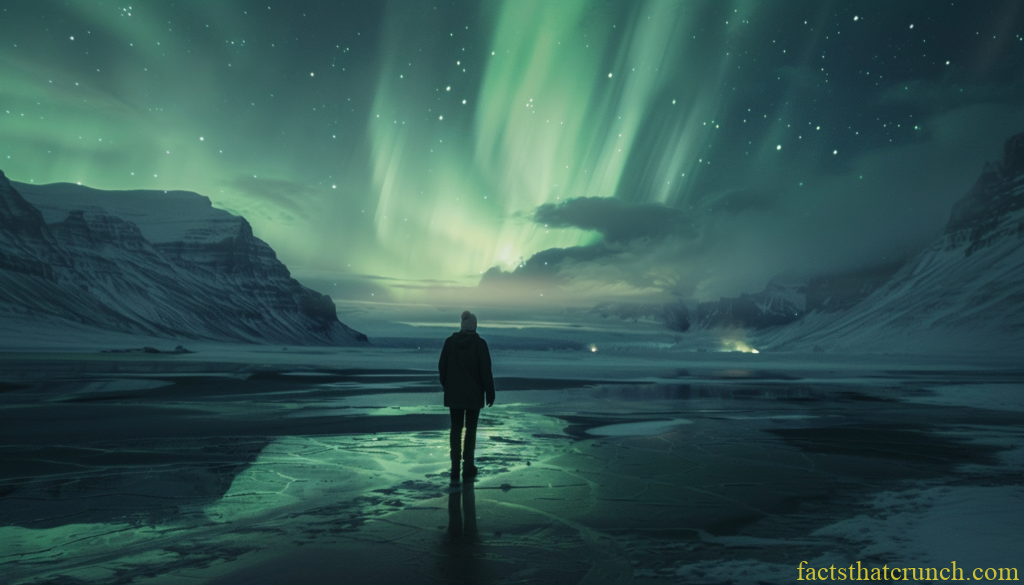5 Incredible Planet Earth Facts
Let’s explore 5 incredible planet Earth facts! Earth, our home, is a marvel of biodiversity and geological diversity, presenting an appearance of tranquility and life when viewed from space. However, beneath this serene exterior, there are numerous eerie and unsettling truths that remind us of the dynamic and sometimes fearsome nature of our planet.
Our solar system is made up of 8 planets, including: Mercury, Venus, Earth, Mars, Jupiter, Saturn, Uranus, and Neptune. There are five officially recognized dwarf planets in our solar system: Ceres, Pluto, Haumea, Makemake, and Eris.
1. Earth’s Roaming Poles
One of the lesser-known and somewhat unsettling facts about Earth involves the wandering nature of its magnetic poles. Unlike the fixed geographic poles, the magnetic poles are constantly on the move. The North Magnetic Pole, for example, has been shifting its position from Canada towards Russia at a rate of about 34 miles (55 kilometers) per year. This shift could potentially lead to a complete reversal where the north and south magnetic poles swap places, a phenomenon that has occurred multiple times throughout Earth’s history. While this won’t cause any catastrophic events, the idea of compasses suddenly pointing in the opposite direction adds an eerie layer to our understanding of Earth’s magnetic personality.

2. The Supervolcano Beneath Yellowstone
Beneath the picturesque landscapes and geothermal features of Yellowstone National Park lies a massive supervolcano. The Yellowstone Caldera is one of the largest active volcanic systems in the world, with its last eruption occurring approximately 640,000 years ago. If it were to erupt again, the results would be catastrophic, affecting weather patterns and food production globally. The ground beneath Yellowstone is constantly swelling and subsiding as molten rock flows beneath its surface, a reminder of the powerful forces at play beneath our feet. The thought of such immense power lurking under such a scenic spot is both awe-inspiring and a bit terrifying.

3. The Mass Extinction Impact Crater
The Chicxulub crater, located beneath the Yucatán Peninsula in Mexico, is a stark reminder of Earth’s violent past. This crater, measuring about 93 miles (150 kilometers) in diameter, is the result of a colossal asteroid impact that occurred around 66 million years ago. This event is widely believed to have caused the mass extinction of the dinosaurs and about 75% of all species on Earth at the time. Today, this crater is a quiet, buried relic of a catastrophic past, hidden beneath layers of sediment and water, its existence serving as a creepy testament to Earth’s capacity for sudden, dramatic change.
4. Earth’s Oxygen-Producing Bacteria
While it’s widely known that plants produce much of Earth’s oxygen through photosynthesis, few people realize that a significant portion also comes from oceanic bacteria. Tiny organisms known as cyanobacteria play a crucial role in maintaining the oxygen in our atmosphere. Billions of years ago, these bacteria were responsible for the “Great Oxygenation Event,” which dramatically increased the levels of oxygen on our planet, leading to the proliferation of life forms. The idea that microscopic life forms hold the key to Earth’s breathability adds a fascinating and slightly eerie dimension to the story of our planet.

5. The Booming Sounds of the Northern Lights
The Northern Lights, or aurora borealis, are not only a visual spectacle but also an auditory mystery. For centuries, reports have mentioned clapping, cracking, and swishing sounds associated with this natural light display. Only recently have scientists confirmed that these sounds genuinely occur, and they originate about 230 feet (70 meters) above the ground. These noises are caused by the electrical charges in the atmosphere that produce the aurora itself. The realization that this stunning light show is accompanied by sounds adds an otherworldly, almost ghostly quality to these northern skies.

Planet Earth Facts: Summary
Planet Earth, with its wandering magnetic poles, hidden supervolcanoes, evidence of colossal impacts, oxygen-producing microbes, and audibly active auroras, is a planet of hidden depths and mysteries. These facts not only illustrate the dynamic and somewhat eerie aspects of our world but also highlight the delicate balance and interconnectivity of life and the environment. As we continue to explore and understand our planet’s complexities, we find that Earth continually reveals new layers of its character, each more fascinating and sometimes more unsettling than the last. As residents of this beautiful, bizarre, and vibrant planet, we continue to live and thrive amidst these mysteries, always on the brink of the next great discovery.

